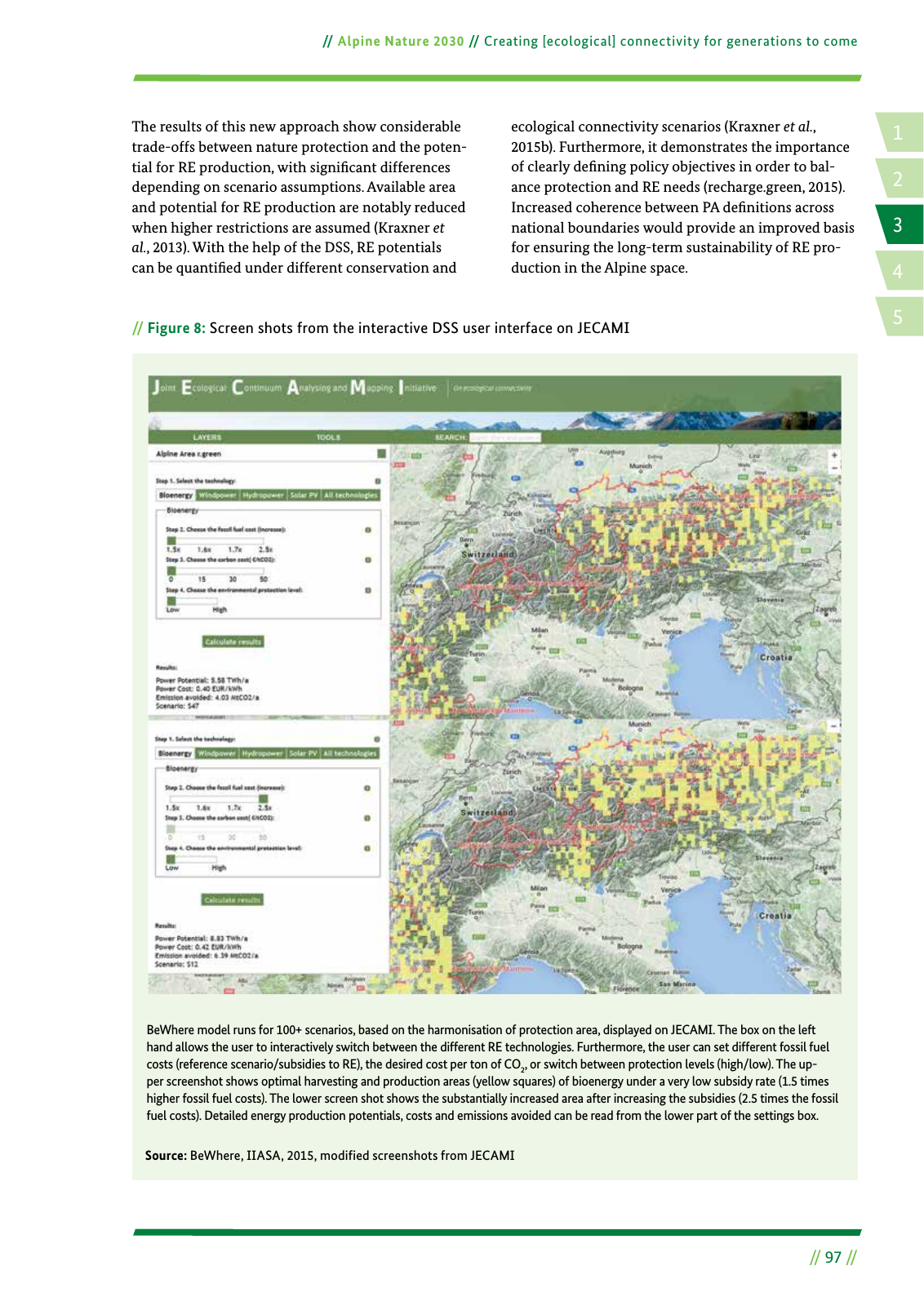14 2 5 3 Alpine Nature 2030 Creating ecological connectivity for generations to come 97 The results of this new approach show considerable trade offs between nature protection and the poten tial for RE production with signi cant differences depending on scenario assumptions Available area and potential for RE production are notably reduced when higher restrictions are assumed Kraxner et al 2013 With the help of the DSS RE potentials can be quanti ed under different conservation and ecological connectivity scenarios Kraxner et al 2015b Furthermore it demonstrates the importance of clearly de ning policy objectives in order to bal ance protection and RE needs recharge green 2015 Increased coherence between PA de nitions across national boundaries would provide an improved basis for ensuring the long term sustainability of RE pro duction in the Alpine space BeWhere model runs for 100 scenarios based on the harmonisation of protection area displayed on JECAMI The box on the left hand allows the user to interactively switch between the different RE technologies Furthermore the user can set different fossil fuel costs reference scenario subsidies to RE the desired cost per ton of CO2 or switch between protection levels high low The up per screenshot shows optimal harvesting and production areas yellow squares of bioenergy under a very low subsidy rate 1 5 times higher fossil fuel costs The lower screen shot shows the substantially increased area after increasing the subsidies 2 5 times the fossil fuel costs Detailed energy production potentials costs and emissions avoided can be read from the lower part of the settings box Figure 8 Screen shots from the interactive DSS user interface on JECAMI Source BeWhere IIASA 2015 modified screenshots from JECAMI

Hinweis: Dies ist eine maschinenlesbare No-Flash Ansicht.
Klicken Sie hier um zur Online-Version zu gelangen.
Klicken Sie hier um zur Online-Version zu gelangen.